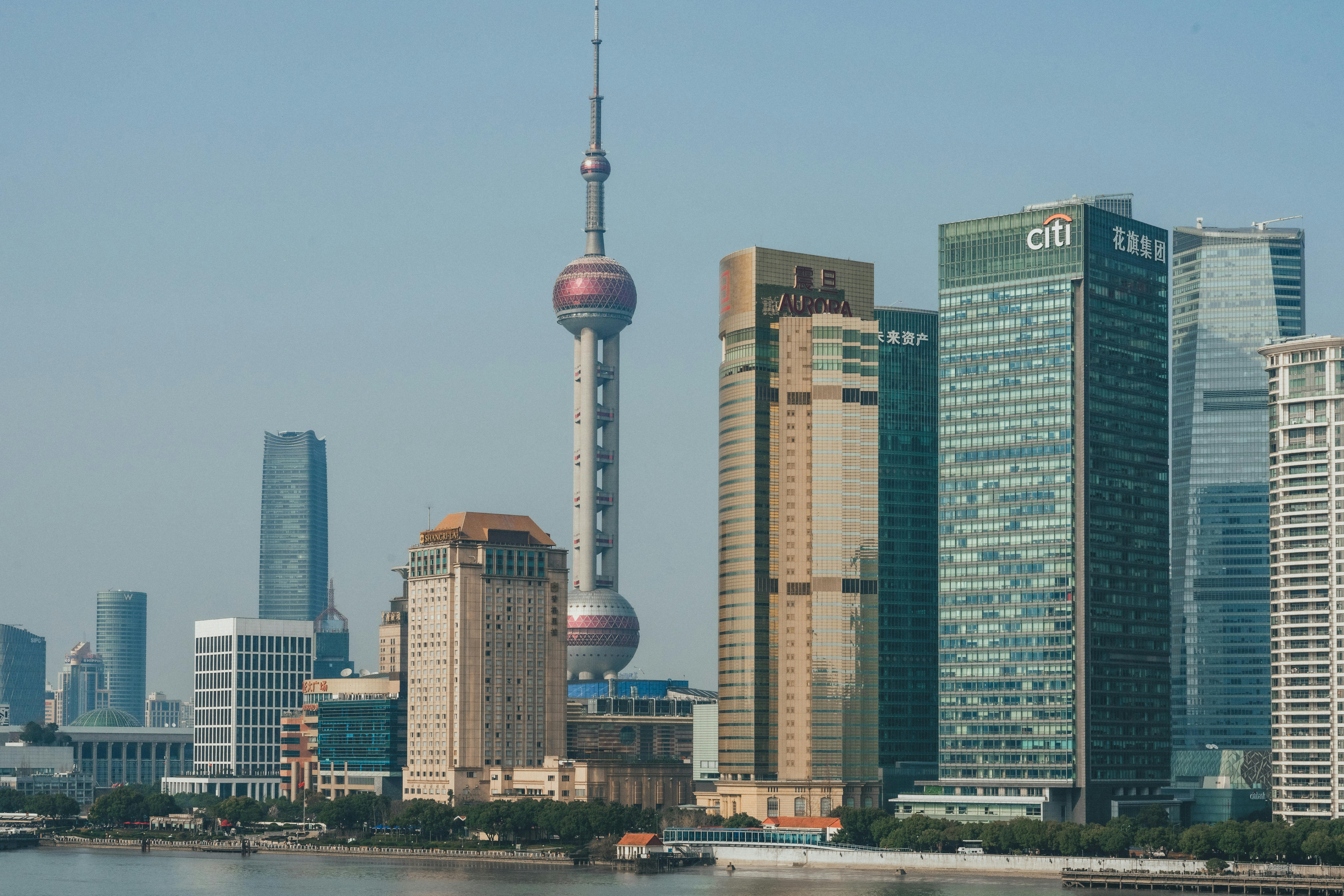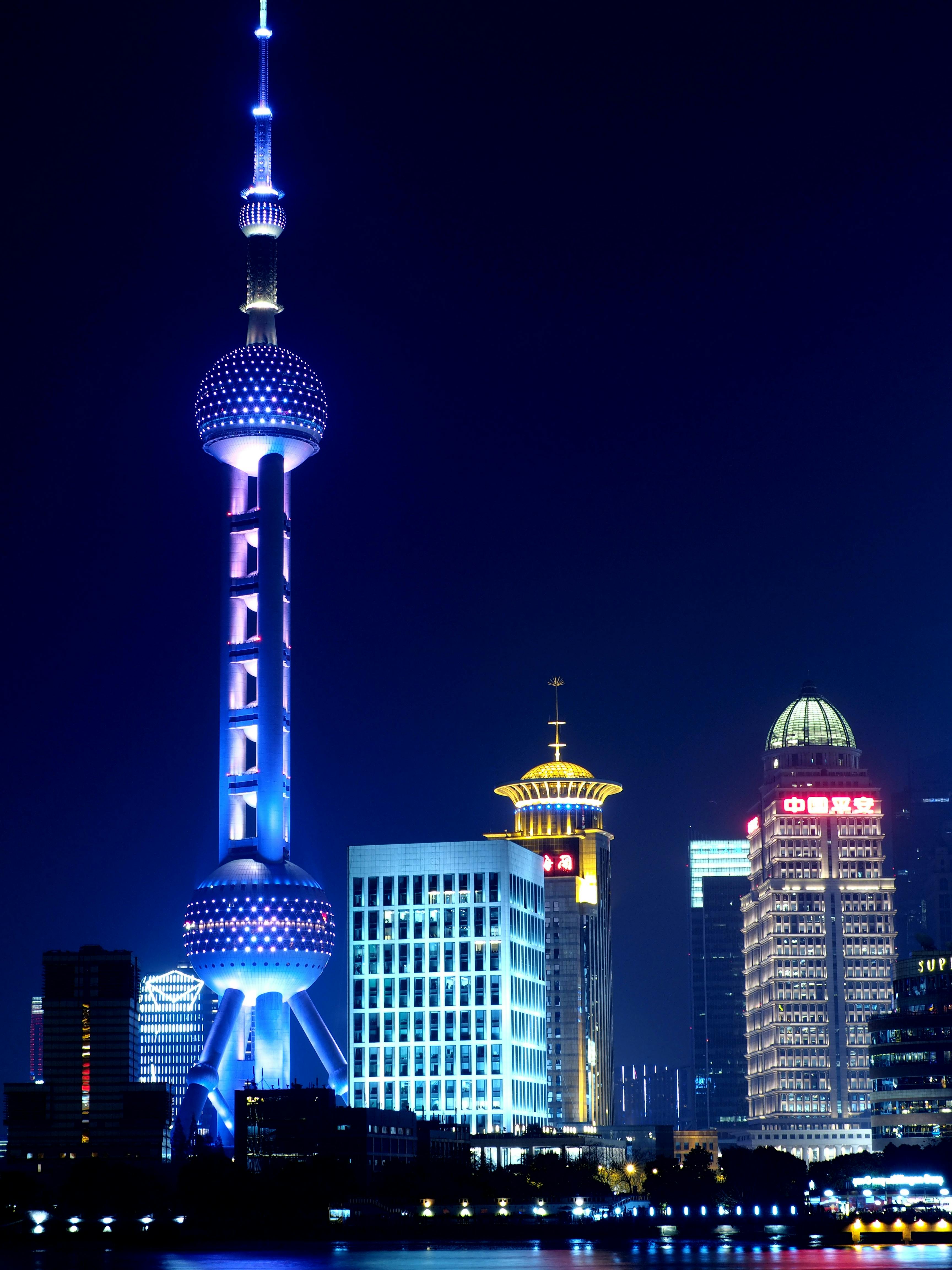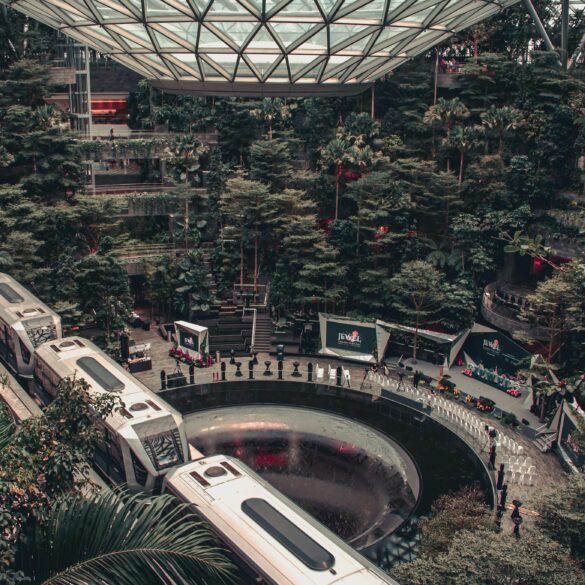China’s Smart City Planning: Transforming Urban Infrastructure & Daily Life
Back when smart cities were mostly a futuristic pitch in policy docs, I remember standing in Shanghai’s Pudong district, wondering how all these blinking lights and sleek facades could actually make city life better for real people. Fast-forward just a few short years, and suddenly the term “smart city” isn’t a buzzword—it’s a blueprint for living, with China at the global forefront. Over 500 Chinese cities have launched smart city pilot projects1. That scale alone is staggering. But what’s actually happening beneath the hood? Are these urban planning solutions delivering efficient infrastructure and truly enhancing daily life—or is it mostly impressive tech for show?
In my experience consulting and reporting across Asia, smart city development in China presents a paradox: it’s grand, systematic, and imaginative—sometimes to the point of overwhelming. What really strikes me is how Chinese planners mix cutting-edge digital networks (think IoT and AI) with traditional city management, always with an eye toward mass scale and real impact. It can be inspiring, confusing, and unpredictable—sometimes all at once.
Smart City Surge: China’s Urban Evolution in Context
Funny thing is, just a decade ago, when you asked about urban innovation in China, answers invariably pointed to massive construction—roads, towers, stadiums. Now, it’s digital networks, green infrastructure, citizen engagement platforms. According to the Ministry of Housing and Urban-Rural Development, over 95% of Chinese provinces report significant smart city initiatives as of 20242.
Key Takeaway
China’s approach isn’t just “smart”—it’s systemically ambitious. Massive investments, pilot zones, and sweeping urban reforms create continuous cycles of experimentation, learning, and scaling. If you want to understand where cities worldwide might head in the next decade, you have to look at China’s unique mix of top-down policy, bottom-up citizen demand, and relentless tech evolution.
China’s Multi-Level Urban Planning Approach
From my perspective, what gets overlooked in many Western articles is how urban planning in China operates at several layers—national, provincial, municipal, and even the district/zone level. Policy directives ripple down (and sometimes up), with local governments customizing smart city projects to match economic, social, and geographic priorities. Having sat in on planning meetings from Suzhou to Chengdu, I’ve witnessed both the discipline and “let’s try this” spirit—often in the very same room. It’s genuinely dynamic, sometimes bonkers, but it produces results.
- National frameworks set ambitious targets (digital infrastructure, green mobility, energy)
- Provincial and municipal leaders adapt plans for local population needs and growth curves
- Pilot zones and special districts pioneer specific solutions (e.g., “AI city hubs” in Guangzhou)
- Citizen feedback increasingly shapes project adaptation—especially in second-tier cities
Did You Know? The city of Hangzhou, famous for its “City Brain” platform, uses real-time data to coordinate traffic lights, optimize ambulance routes, and even predict crowd flows during festivals. This system cut average traffic congestion by 15% in three years3.
Key Drivers: What Fuels China’s Smart City Ambition?
Here’s where I get passionate—the drivers behind China’s smart city evolution aren’t just about tech or show. They balance urgent growth pressures, social stability, deep national pride, and an almost relentless drive to “leapfrog” past infrastructure bottlenecks. The result is a mix of practical necessity (addressing urban migration, pollution, aging infrastructure) and visionary aspiration (“world-class” always comes up).
- Population density and migration: Over 60% of China’s population lives in urban centers4
- Environmental pressures: Air quality, water management, and green space deficits
- Economic competition: Global city status demands digital-first infrastructure
- Policy as innovation: Central government sees city planning as national strategy
Ever notice how real progress tends to happen where necessity meets inspiration? In China, urban planning is basically a national sport—forward-thinking and reactive all at once.
Digital Infrastructure & IoT Integration: The Backbone of Smart Cities
Let me be upfront: “digital infrastructure” is easy to talk about, but actually deploying it across hundreds of differently-sized cities? That’s a whole other game. The scale in China is unlike anything I’ve seen, and it’s instructive. Think fiber-optic backbones, 5G coverage blanketing entire metro regions, and sensor networks embedded everywhere—from traffic lights to trash bins. The result? Data-driven city operations that, for better and occasionally for worse, reshape the rhythm of daily life5.
- IoT sensors monitor air pollution, noise, traffic, energy use, and more
- 5G networks allow for real-time communication between devices, vehicles, infrastructure
- Big Data platforms centralize public data for city managers and planners
- Cloud-based governance tools streamline service delivery—from permits to emergency alerts
Expert Insight
According to Dr. Wang Yimin, a senior researcher at Tsinghua University, “China’s approach to urban digitalization serves dual purposes: management efficiency and citizen empowerment. But the real value lies in how cities adapt these platforms—in Guangzhou, IoT tracks water waste, in Nanjing, it’s about elderly care monitoring.”6
Enhancing Quality Living & Citizen Services
Now, the big question—and it’s one clients always ask me—is whether all this tech actually makes life better. From my perspective, results are genuinely mixed; plenty of cities deliver, but some projects struggle with adoption or feel too “top-down.” That said, I’ve seen extraordinary outcomes in cities willing to rethink citizen services using digital backbones.
- Smart health platforms (telemedicine, rapid health monitoring)
- Efficient e-governance for housing, taxes, and business regulation
- Public safety networks for early disaster warning and response
- Interactive apps for feedback, local news, and urban events
A colleague recently pointed out that in Chengdu, automated online permit systems reduced approval timelines by more than 60%. Can you imagine the impact on small business owners eager to get started? This is urban efficiency with direct human benefit.
“Smart cities are not just about technology—they are about making human environments adaptable, responsive, and uplifting for everyone.”
Case Studies: Shanghai, Shenzhen, Hangzhou
The more I consider this, the clearer it becomes: the “smart city” story in China plays out differently depending on city size, local leadership, and economic ambition. Let’s step back and look at three standout examples—Shanghai, Shenzhen, and Hangzhou. Each has pioneered unique solutions and faced radically different challenges.
| City | Signature Projects | Outcomes | Challenges |
|---|---|---|---|
| Shanghai | Metro integration, e-government, disaster monitoring | Reduced congestion, improved emergency response, strong digital citizen services | Legacy infrastructure, privacy debates, equity gaps |
| Shenzhen | Smart industrial parks, facial recognition transit, AI-powered safety | Factory-to-city integration, advanced AI deployment | Rapid expansion strains, digital literacy gaps |
| Hangzhou | “City Brain” AI, green mobility, public engagement portals | 15% traffic reduction, real-time city management, public trust gains | Scalability, data governance, sustaining citizen trust |
What fascinates me about these cases isn’t just the impressive stats, but the way planning teams admit missteps and iterate. I remember hearing at a Hangzhou conference about the struggle to win public trust after early AI glitches—honestly, it was refreshing to hear both wins and mistakes.
Expert Callout
Data-driven planning works best when leaders combine hard metrics with soft skills—community engagement, trust-building, and transparent communication. None of the above cities got everything right the first time.

Sustainable & Green Mobility: Reimagining Urban Flow
This brings up another point—smart city planning isn’t just digital dashboards and sensor networks. It’s physical space, movement, and lived experience. More or less, green mobility has become the new gold standard: unmanned subways, electric buses, “bike sharing 2.0”. I remember three years ago, trying out a dockless e-bike in Hangzhou, thinking, “So, this really solves the last-mile transport problem?”
- Electric buses and taxis reducing emissions in 90+ cities8
- Smart parking and traffic sensors optimizing urban flow
- Automated logistics hubs for efficient freight management
- Urban greenways linking parks, rivers, and neighborhoods
According to government figures, by the end of 2024, China expects 350,000 electric buses on its roads9. This is, frankly, a massive transformation—not just tech, but an ethos of sustainable city life.
“Cities must be built not only smart, but clean and equitable. China has an unprecedented opportunity to define green urbanization for the world.”
Citizen Engagement: From Feedback to Co-Creation
I’ll be completely honest, citizen engagement is an area where Chinese cities still wrestle. Some pilots shine (Hangzhou’s public portals, Shenzhen’s smart community apps); others struggle with meaningful participation. There’s been real progress, though. Tools like WeChat city services and direct app feedback loops have opened doors that previously sounded closed.
Practical Reflection
- Active citizen platforms for reporting infrastructure issues
- Open data apps that track air, water, and traffic in real-time
- Participatory budgeting pilots in select districts
Some of you might wonder—does it all really get used? Based on my experience, usage soars when platforms are mobile-friendly and local leaders build genuine trust. Skepticism remains, especially in older districts. But the trajectory’s undeniable: smart city projects with strong citizen input tend to outperform those relying solely on technocratic control11.
Resilience: Smart Cities in the Face of Urban Risks
Here’s what gets me—resilience isn’t usually the headline draw for smart city initiatives, but in China, it’s quietly central. Think flood monitoring, pollution alerts, and rapid safety mobilization during typhoons. Some cities use data to trigger automatic evacuation warnings, while others leverage predictive analytics for infrastructure stress tests.
- Flood sensors along vulnerable riverbanks
- AI-based systems for earthquake response
- Health monitoring platforms for epidemic control
A landmark example: Wuhan’s smart city health monitoring network played a key role in COVID contact tracing, containment, and reopening12. Actually, let me clarify—while tech isn’t magic, cities that combined digital infrastructure with rapid human response proved far more resilient.
Did You Know? Guangzhou’s “Emergency Big Data Center” integrates meteorological, traffic, and public health data to coordinate cross-agency disaster response. Their pilot reduced emergency dispatch times by 40% in 202313.
Challenges, Opportunities, & Future Outlook
Okay, let’s step back and ask the tough questions: What are the limits? Where does China’s smart city model hit a wall? The answer, based on both research and real experience, lies in balancing ambition with human needs, privacy, and cultural context14.
- Data Governance: Striking the right balance between analytics and citizen privacy
- Scalability: Upgrading smaller cities with big-city solutions can be tricky
- Inclusivity: Tech must reach all segments—age, income, digital literacy
- International integration: Adapting global best practices to unique Chinese context
I’m not entirely convinced every pilot is a blueprint for the world, but China’s capacity for learning and adapting is formidable. A mentor of mine often reminds me, “City planning is always unfinished business.” These cities are evolving in real time. Some lessons absolutely travel; others demand local remixing.
Next Steps: Smart City Replication & Global Impact
Looking ahead—and I mean, as of right now in 2025—China’s smart city journey is influencing urban planning worldwide. Innovative systems like Hangzhou’s “City Brain” are in demand from Singapore to Dubai. But what I’ve consistently found is that adapting these solutions requires more than technology transfer—it needs careful cultural adaptation, local pilot testing, and ongoing learning15.
Actionable Takeaways for City Leaders
- Prioritize citizen engagement as early as possible in every smart city project
- Invest in scalable infrastructure, but keep adaptability at the forefront
- Center resilience and inclusion alongside tech innovation
- Embrace mistakes and iteration as essential parts of the process
From my perspective, the emotional arc of China’s smart city story is about ambition, rapid change, and increasing self-reflection. Conference conversations reveal both pride and uncertainty. Leaders emphasize global leadership, but there’s growing recognition that “smarter” also means “more human-scale, more equitable.”
“Progress will be measured not by the number of sensors in the city, but by the level of trust, wellbeing, and creativity those sensors support.”
Conclusion: A Living Urban Experiment
Honestly, I reckon China’s smart city drive is a gigantic, living experiment. It’s bold, sometimes messy, often exhilarating. What excites me most is the willingness to learn—to admit missteps, revise plans, and try again. Having worked closely with urban leaders, I see the value in combining digital infrastructure with human-centered design, resilience, and community trust.
But I need to revise my earlier point about scalability—while many of China’s biggest success stories come from megacities, it’s the smaller, less heralded cities that might hold the blueprint for genuinely sustainable urban change. As the world watches, the real test will be in balancing efficiency with empathy, speed with inclusivity, and data with dignity.
References & Further Reading
Works Cited



